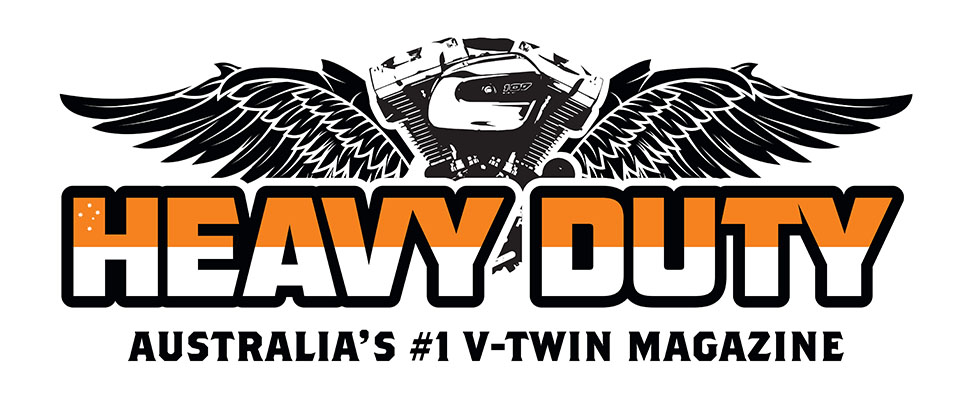issue 182
/1917 J series 61ci F-Head 15hp Motor-Mobile Infantry
In the beginning, there were only horses and pedal power. Then came along the story of four boys and a shed … and to the world’s greatest V-twin motorcycle.
Like so many fairytales there are also many misadventures. This is my story on the detours and dead-ends of The Motor Company. From the original mission of building motorcycles to go further and faster than anyone else. To today’s mission of… “More than building machines, we stand for the timeless pursuit of adventure. Freedom for the soul.”
As I recounted in a previous issue of Heavy Duty, Bill Harley drew up the design of the first prototype motor in 1902, as a multipurpose strap-on engine. The first advertisement from The Motor Company was for a stand-alone buckboard motor that could be attached to a horse pulled buggy and motor on down the road.
So around 1903 Walter Davidson comes home for his older brother Bill Davidson’s wedding and since he is a hands-on tradesman, he get’s elected by the others (who are white shirt and suit types) to actually build the first prototype with a 115cc strap-on motor and put it on a bicycle frame.
Now we are on track to building motorcycles…
From then on Bill Harley designed new models every year and even the first trike, the 1915 Precar trike package truck. The Precar was the first detour from a two-wheeled motorcycle but through many reincarnations we now have the Tri Glides and Freewheelers of today.
DETOUR ONE
1917 J series 61ci F-Head 15hp Motor-Mobile Infantry
During the Great War, in 1917, Harley only took a slight detour building combat vehicles like the 1917 J series Mobile Infantry.
Post-WW I, Bill Harley was back on track with an all new 1919 Sport model with a longitudinal twin motor. But just before that was the second detour, the 1917 Harley-Davidson Pushbike.
Bill Harley was ever the inventor and between the Wars, we find him making dead-ends like the 1927 airplane V-twin and 1929 Worthington Lawnmower engines.
DETOUR TWO
1919 Sport model
1925 H-D JDCB 74ci V-twin
1927 Airplane engine based on a Harley JD V-twin
1929 Worthington Lawnmower Harley Engine
1937-45 Rikuo Road King Type 97
Little known is that Harley detoured its core business by selling the rights to build Harleys in Japan in 1931. The Japanese company was named Rikuo which loosely translates to king of the road. We know those bikes from WWII as the Rikuo Type 97.
DETOUR THREE
1940-45 WWII
The biggest detour for Harley was World War II with essentially all its production going to the war effort. The mainstay of the production was the militarisation of a core bike we all know as the WLA or WL Army Liberator. There was the WLC for Canada. The Soviet Union got 30,000 WLAs to their own specifications. And later the WLAs were reintroduced for the Korean War.
The dead-end bikes from WW II for “government requirements” like the XA, a BMW copy for desert use with a shaft drive. Most interesting to me is the 1943 FC dual engine for a Canadian tank that was never produced and the 1943 Willys WAC Peep with an XA engine. Late in the war were the dead-end TA trike and the Soviet WSR.
DETOUR FOUR
After the War, Harley and the other Allies received war reparations in the designs for the German DKW RT125 two-cycle engined motorcycle that Harley detoured to build small motorcycles like the Hummer. But again Harley detoured with other post WWII government requirements for a small motorcycles like the 1957 Sportster XLA Army and the MT-350/500 Rotax engined specials. A really big dead-end was the 1960s Jayhawk rocket engine called the LR-64. Why did they design that rocket engine? I guess you could say “because they could…”
1937-45 Rikuo Road King Type 97
1940 model UL machine gun sidecar 74ci Flathead
1940s XA Servi-car with BMW R71 750cc sidevalve engine, shaft drive trike
1941 XA BMW R71 copy, 1011 prototypes
1941 XS, an XA with sidecar but 2WD, three prototypes
1943 FC dual engine for Canadian Tank, one prototype
1943 Willys WAC Peep with XA 750 engine
1944 TA 3 Wheel Trike, 68ci Knucklehead, 18 prototypes
1944 WSR Russia, a WLA with higher chassis, longer forks, one prototype
1946 Harley XA
1948 DKW RT125-HD S-125 Hummer
1957-65 Sportster XL Army
1960s Jayhawk Missile Engine, LR-64
DETOUR FIVE
From the 1960s saw more detours if not dead-ends with the purchase of Aermacchi, Holiday Rambler motorhomes, Lehman trikes, and Tomahawk Boats. Harley even had multiple encounters with Buell, MV Augusta, and here in Australia, the New Castalloy Pty.
1960 to 1965 Topper custom
1963 Tomahawk Boats
1966 Snowmobile and FLH blue
1974-76 Harley-Davidson RR-250
1975 Harley model D Golf Car, Evel Knievel
1981 Nova XR
1986 Vetter-styled Buell RR1000
1988 Holiday Rambler RV
1994 Gibson Harley
2006 Penster Reverse Trike 1
2006-2018 New Castalloy Adelaide made H-D wheels
2014 Lehman Trike
2019 Harley-Davidson Livewire
2021 Serial-1-cycle
DETOUR SIX
For sure, the best of the detours had to be Tomahawk which to this very day, gives us all the plastic bits like the Batwing. And our final detour and dead-end are the 100 More Roads to Harley-Davidson with the LiveWire division and the possible small engined bikes for the Asian market.
For me, the core motorcycles will remain powered by the Milwaukee-Eight in the Softails and Touring models along with the Revolution Max engine powering Pan America and Sportsters.



